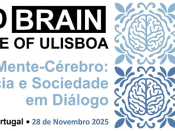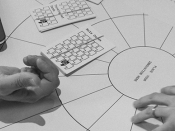Por Hugo Silva (IST).
In the U.S. alone, there are almost twice more heart attacks than reported home structure fires every year. Nevertheless, a typical household has multiple fire detectors to help prevent the latter, and virtually no way of warning about the former. Biomedical sensing, analysis, and data interpretation are basic elements of wellbeing assessment, preventive healthcare, and creation of better healing environments.
While wearables have contributed to make such elements a more pervasive and integral part of people’s daily lives, biomedical sensing can take health monitoring one step further. By incorporating biomedical sensing in the surrounding environment in a more integrated way, it can become much more pervasive. Although this approach is not likely to “replace” regular methods, it may act as an invisible proxy or complement to regular care.
In this talk we will provide a brief introduction to the “invisibles” approach to biomedical sensing, describing some of the ways in which they can be incorporated in our everyday lives, and presenting practical examples of tools and conceptual installations that illustrate how the living space of the future may become an “invisible doctor”.
Bio:
Hugo believes he’s one of the few lucky people that can say he worked very few days in his life... not because of lack of a job (fortunately), but because when you do things you love and you're passionate about almost every single day, there's no boundary between what's work and what's just pure fun.
He completed his PhD in Electrical and Computers Engineering at the University of Lisbon. Since 2004, Hugo is a researcher at the IT - Instituto de Telecomunicações (http://www.it.pt/person_detail_p.asp?id=1293) and a Professor at IST - Instituto Superior Técnico since 2019. Hugo is also a co-founder of multiple innovative technology-based companies, operating in the fields of biomedical devices and data science for healthcare and quality of life.
More recently, he has been actively working (i.e. having fun) towards making the world a bit more physiological through BITalino (http://www.bitalino.com), an open source software and low-cost hardware toolkit, which allows anyone from students to professional app developers, to create cool projects and applications with physiological sensors. His main interest areas include biomedical instrumentation and data acquisition, system engineering, signal processing, and machine learning.
Transmissão em direto via Zoom.





















